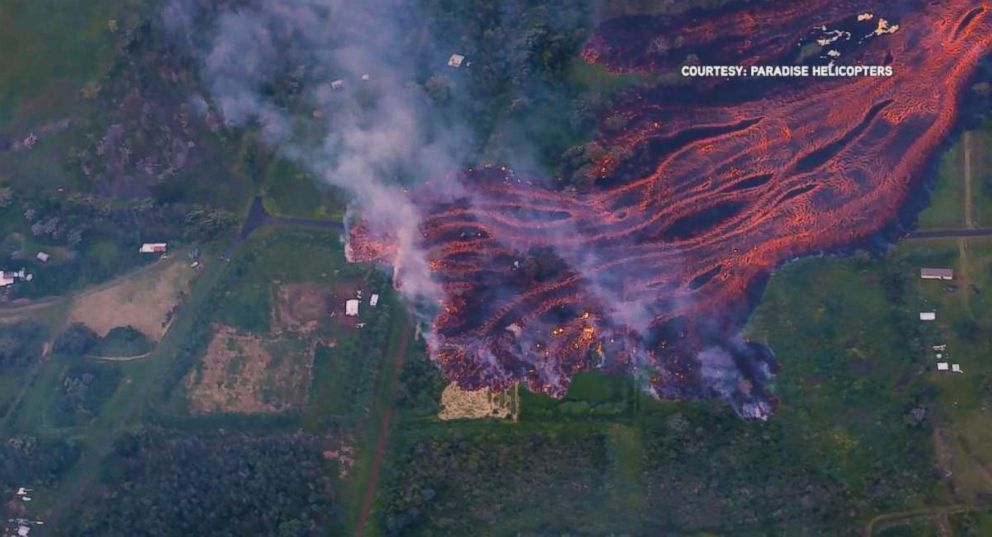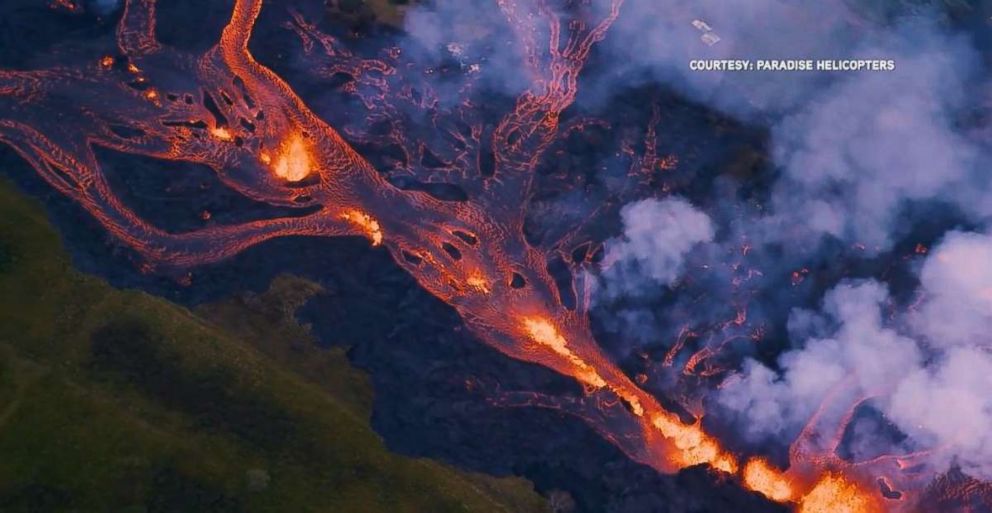Lava reaches ocean in Hawaii, creating toxic cloud over island
A man was seriously when he was hit in the leg by lava splatter.
Lava oozing from two fissures in the Puna district of Hawaii crossed Highway 137 on Sunday and entered the ocean, creating a hazardous plume that stretched skyward along the southeast coast of the Big Island.
Hawaii's Civil Defense Agency warned people to stay away from the plume, called laze -- an amalgamation of lava and haze -- which is toxic and can cause eye and skin irritation and lung damage.
"Be aware of the laze hazard and stay away from any ocean plume," the Civil Defense Agency warned. "Laze is formed when hot lava hits the ocean sending hydrochloric acid and steam with fine glass particles into the air."
The U.S. Coast Guard was monitoring the area, though boats with onlookers were allowed nearby with permission.
"Stay away from any ocean plume," the agency wrote in a warning at 6 p.m. local time (midnight Monday Eastern time). "The plume travels with the wind and can change direction without warning."
Everyone was warned to stay away from the area near MacKenzie State Park where the lava met the Pacific Ocean. Highway 137 was also closed in the area due to the lava flow.

Hawaii had issued new evacuations on Saturday as active lava flows caused brush fires to spread in Puna, the state's easternmost district.
Officials were unsure how many homes in the region the new evacuation orders would affect, but they were going door to door to check on residents.
Many of the people in the area had already voluntarily evacuated, a spokesperson for the mayor's office told ABC News.
The mayor's office also confirmed the first injury since Kilauea erupted May 3. The spokesperson said Saturday a homeowner on Noni Farms Road in the hard-hit town of Pahoa was sitting on his balcony when he was hit with lava splatter. The man was hit on the leg and shattered everything from the shin down to his foot, the spokesperson said. The man was rushed to the hospital for treatment.
The lava erupting from Kilauea can be as hot as 2,000 degrees, according to the United States Geological Survey (USGS), though it cools by hundreds of degrees once it hits the open air.
There have now been 22 different fissures to open in the Puna district since the May 3 eruption triggered the current problems on the island.
The Civil Defense Agency said on Friday night that 40 home were threatened in Puna by the fast-moving lava spewing from the 20th fissure. Four residents had to be evacuated by county and National Guard helicopters on Friday after they were cut off by the lava flow.

Large plumes of ash erupted from Kilauea on Saturday afternoon, as well. The USGS told ABC News that the plume was another of the ongoing phreatic -- steam-driven -- explosions that have been seen over the past few days. The ash cloud on Saturday wasn't as high as ones earlier in the week.
A larger blast took place at about midnight on Saturday (6 a.m. Eastern time), with the ash threatening five neighborhoods southwest of the volcano. The Civil Defense Agency had warned residents to stay indoors and keep windows closed until the hazard had passed.
An eruption on Thursday sent an ash plume 30,000 feet into the air, according to officials.




